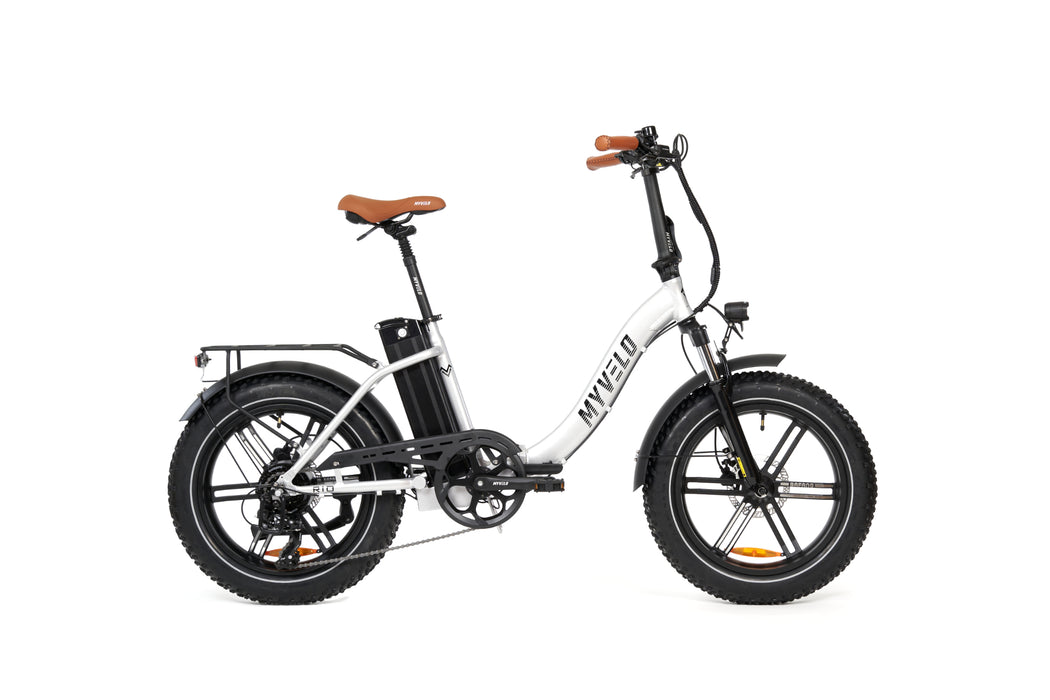
Rio electric folding bike
incl. FREE shipping & free returns
Ready for dispatch immediately, delivery time 2-3 days.

The freewheel is a mechanism on the rear hub of a bicycle that allows the cyclist to rest the pedals in certain situations without the crank and thus the rear wheel turning. The freewheel helps make cycling more efficient and comfortable.
The freewheel consists of a pinion gear mounted on the rear hub and a freewheel clutch. This clutch allows the pinion gear to rotate with the hub in one direction (usually forward) while rotating freely in the other direction. This means that the pedals are only connected to the crank and pinion gear when the rider is pedaling and moving the bike forward.
Situations in which the freewheel is particularly useful are, for example, when riding downhill or when the bike is rolling faster than the rider's pedaling speed. In these moments, the rider can rest the pedals without the crank turning. This increases riding comfort and allows the cyclist to better concentrate on the stability and control of the bike.
The freewheel is now a standard component of almost all bicycles with derailleur gears .

Wenn in München die Wiesn-Zeit beginnt, heißt es wieder „O’zapft is!“. Millionen Besucher strömen jedes Jahr zum Oktoberfest, um bayerische Tradition, Tracht, Bier und Gaudi zu genießen. Doch während Festzeltstimmung und Fahrgeschäfte locken, stellt sich schnell die Frage: Wie kommt man am besten hin und wieder sicher nach Hause? Eine clevere Antwort darauf ist: mit dem Fahrrad!

Radfahren ist weit mehr als nur Sport oder Fortbewegung – es ist auch ein soziales Erlebnis. Immer mehr Radbegeisterte schließen sich sogenannten Social Rides an. Dabei geht es nicht um Bestzeiten oder knallhartes Training, sondern um Gemeinschaft, Spaß und geteilte Leidenschaft fürs Rad.

Sarcopenia – this medical term refers to a very real problem: the age-related loss of muscle mass and strength. Starting around the age of 50, the body loses up to 1–2% of its muscle mass annually. The consequences: weakness, unsteadiness when walking, and the risk of falls. But this doesn't have to be the case. Exercise is the best remedy for muscle atrophy – and this is precisely where the e-bike comes in. It enables regular, joint-friendly muscle training even in old age – without overexertion.